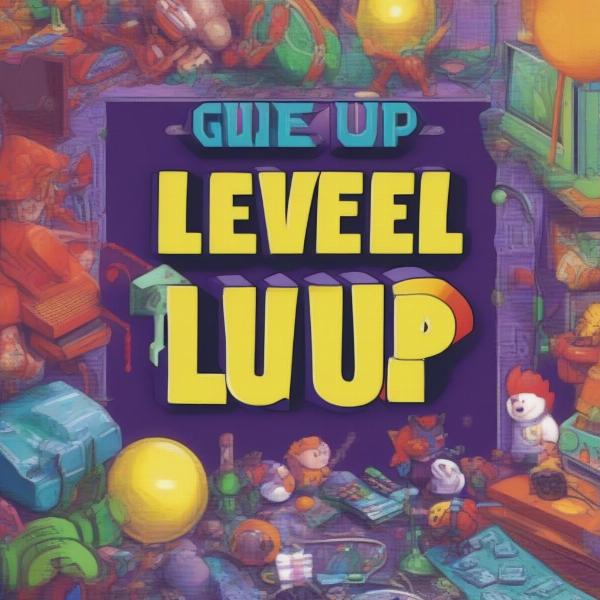Welcome to supremeduelist.blog, your go-to destination for insightful game analysis. If you’re looking to elevate your understanding of game design, or you are aspiring to create your own immersive worlds, understanding the core principles is crucial. This article dives deep into the Best Game Design Books available, providing a roadmap for both beginners and experienced developers. We will explore books covering various aspects of game creation, from basic mechanics to advanced narrative techniques.
In this comprehensive guide, we’ll unpack why these books are essential tools for any aspiring game designer. We’ll categorize them by focus, offering a well-rounded view of the best resources for learning and mastering the art of game design. You’ll find this guide to be a valuable resource in your journey towards creating engaging and successful games. Understanding these principles is just as important as knowing the [best games on sale steam], because even the best games are built on a foundation of sound design principles.
Why Read Game Design Books?
Game design is a complex discipline that blends art, psychology, and technology. Books provide a structured way to learn fundamental principles that can be applied to a variety of game types. They offer timeless advice from industry experts, allowing readers to benefit from years of experience. What does a good book on game design offer? It offers a deep dive into theory, provides practical exercises, and helps refine a designer’s understanding of what makes a game truly captivating.
The right books can accelerate your learning curve, helping you avoid common pitfalls and make more informed design decisions. Whether you’re interested in creating indie titles or contributing to AAA productions, a strong foundation in game design theory is paramount. This is why selecting the best game design books is a worthwhile investment in your career, similar to how one would research the [best harry potter game] to understand what elements make for an immersive experience.
Core Game Design Principles
Before diving into specific book recommendations, it’s crucial to understand core game design principles. These fundamentals include understanding player motivation, the flow of gameplay, balancing mechanics, and crafting compelling narratives. A solid grasp of these pillars helps designers build engaging and fun experiences. How important are these fundamentals, exactly? They are the foundation upon which all great games are built.
Understanding player psychology, or why players engage with a game in a certain way, is another important consideration. This involves understanding feedback loops, reward systems, and the emotional engagement a game can evoke. With these principles in place, a designer can better anticipate player actions and tailor the experience to keep them invested, not unlike the tactics involved in creating some of the [best travel board games], which must hold players’ attention without the visual spectacle of video games.
Key Design Elements Covered in These Books
Many game design books emphasize the importance of iterative design. This is the process of prototyping, playtesting, and revising a game until it meets the design goals. Understanding user feedback and making data-driven decisions are critical aspects of this process. The concepts covered include:
- Player Motivation: Understanding why players engage with a game.
- Core Mechanics: Identifying the fundamental actions and rules.
- Level Design: Creating environments that support the gameplay.
- User Experience (UX): Ensuring the game is intuitive and enjoyable.
- Narrative Design: Integrating storytelling effectively.
 a-pile-of-game-design-books
a-pile-of-game-design-books
Top Game Design Book Recommendations
Now let’s dive into specific titles that consistently appear on lists of the best game design books. These books are chosen for their breadth of coverage, the depth of insight, and their continued relevance in the modern game development landscape. This list aims to cover all core areas to ensure you receive a comprehensive introduction to the craft.
The Art of Game Design: A Book of Lenses by Jesse Schell
Jesse Schell’s book is a comprehensive guide, using the metaphor of “lenses” to view game design from different perspectives. It covers a broad range of topics, including psychology, mechanics, and user experience, making it an essential read for any serious game designer. What makes this book so effective? It encourages readers to think critically about every aspect of their design process.
“The Art of Game Design is the bible for any aspiring game designer,” says Dr. Eleanor Vance, a renowned game design educator. “Its use of the ‘lens’ framework provides a unique and comprehensive view of the complexities of game design.” This book serves as a great starting point, providing a solid foundation for further learning.
Rules of Play: Game Design Fundamentals by Katie Salen and Eric Zimmerman
Rules of Play dives deep into game design theory, exploring games as formal systems with rules, play, and culture. It’s academically rigorous and provides a comprehensive approach, making it a staple in many game design curricula. Why is this book so highly regarded? It offers a structured view of the theoretical underpinnings of the design process.
This book is particularly valuable for those looking to understand the history and evolution of game design, as well as its cultural impact. It provides a broader, more critical view that is invaluable for creating nuanced and thoughtful games. If you’re someone who enjoys understanding the history behind the craft, similar to researching [best football game to play offline], then this book will enhance your knowledge significantly.
Level Up! The Guide to Great Video Game Design by Scott Rogers
Scott Rogers’ Level Up! provides a practical, hands-on approach to game design. It focuses on level design, character creation, and gameplay mechanics, offering real-world examples and advice. What makes this book different from the others? It is very much a practitioner’s guide, emphasizing practical skills rather than theoretical concepts.
“Level Up! is my go-to recommendation for those wanting to jump directly into the practical side of game development,” states Mark Chen, an indie game developer. “It’s full of tips and techniques I’ve used to design some pretty engaging games.” The book is also valuable for those looking to improve their skills quickly with actionable guidance.
 level-up-book-cover-close-up
level-up-book-cover-close-up
Game Feel: A Game Designer’s Guide to Virtual Sensation by Steve Swink
Steve Swink’s Game Feel explores the often overlooked but crucial element of a game’s tactile and sensory experience. It discusses how movement, feedback, and interface contribute to the overall feeling of a game, providing insights into creating intuitive and satisfying player interactions. What aspect of game design is this book focused on? It focuses on how the game feels to play, which can make or break the entire experience.
This book underscores the importance of user experience in creating engaging games. It delves into the details of animation, physics, and sound design, which collectively create a powerful impact on the player. Paying attention to the “feel” of a game is crucial. This approach is just as important as the visual appeal, and sometimes a game’s feel is even more important when you are considering the options for [best games to play on a chromebook], where powerful graphics are not always viable.
A Theory of Fun for Game Design by Raph Koster
Raph Koster’s A Theory of Fun for Game Design delves into the psychological reasons why people play games. It explores the neurological basis of fun and how that can be leveraged in game design, making it a must-read for anyone trying to create truly captivating experiences. Why is this book essential reading? It examines how games create fun at a very fundamental level.
Koster’s book offers a unique perspective on the cognitive and emotional responses triggered by games. It emphasizes learning, mastery, and self-expression as drivers of player engagement, which provides a more nuanced understanding of what players are really looking for when engaging with a game.
How to Choose the Right Books for You
Selecting the best game design books for your needs involves understanding your learning style and focusing on your specific interests. Do you prefer theoretical frameworks or hands-on practical guides? Are you more interested in narrative design or game mechanics? These answers can help guide your choices. The approach to choosing learning resources should be as strategic as choosing what type of game to make.
Consider starting with a more general book like The Art of Game Design to build a foundational understanding, then move to more specialized books depending on your interests. Don’t be afraid to read multiple books and cross-reference ideas. The best way to learn is by integrating different perspectives and insights.
Conclusion
Choosing the right resources is a vital part of mastering game design. The best game design books can provide a structured approach to learning essential skills. They can also help solidify theoretical concepts that are vital for creating immersive gaming experiences. Remember, these tools are a gateway to understanding the heart of game creation, and are as important as knowing the [best games on sale steam].
As you embark on your game design journey, keep in mind that continuous learning and adaptation are key. The field is ever-evolving, and staying informed will help you create more innovative and engaging games. Here at supremeduelist.blog, we’re committed to providing the insights you need to excel in the world of game design and entertainment. Explore more of our content for additional information and reviews to help your game development journey.
Leave a Reply